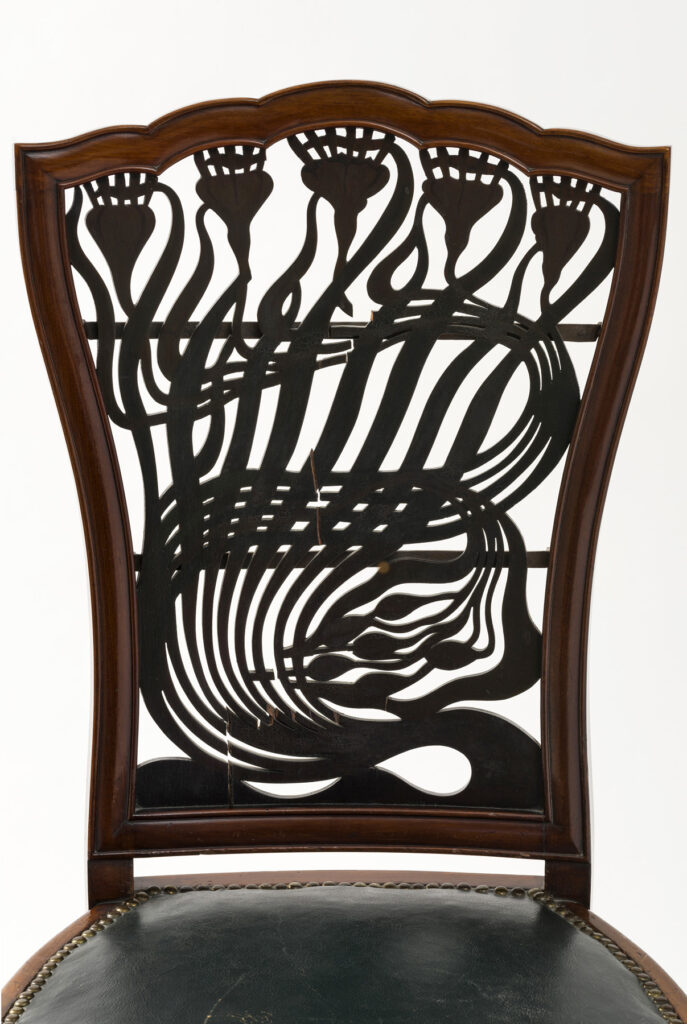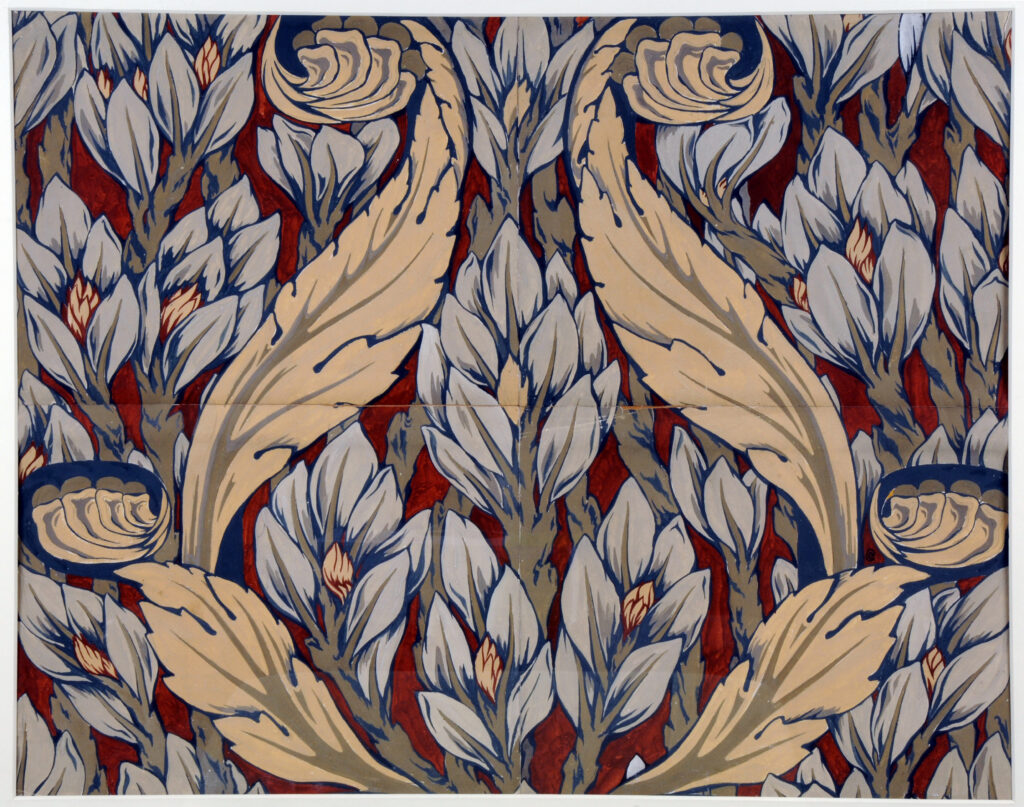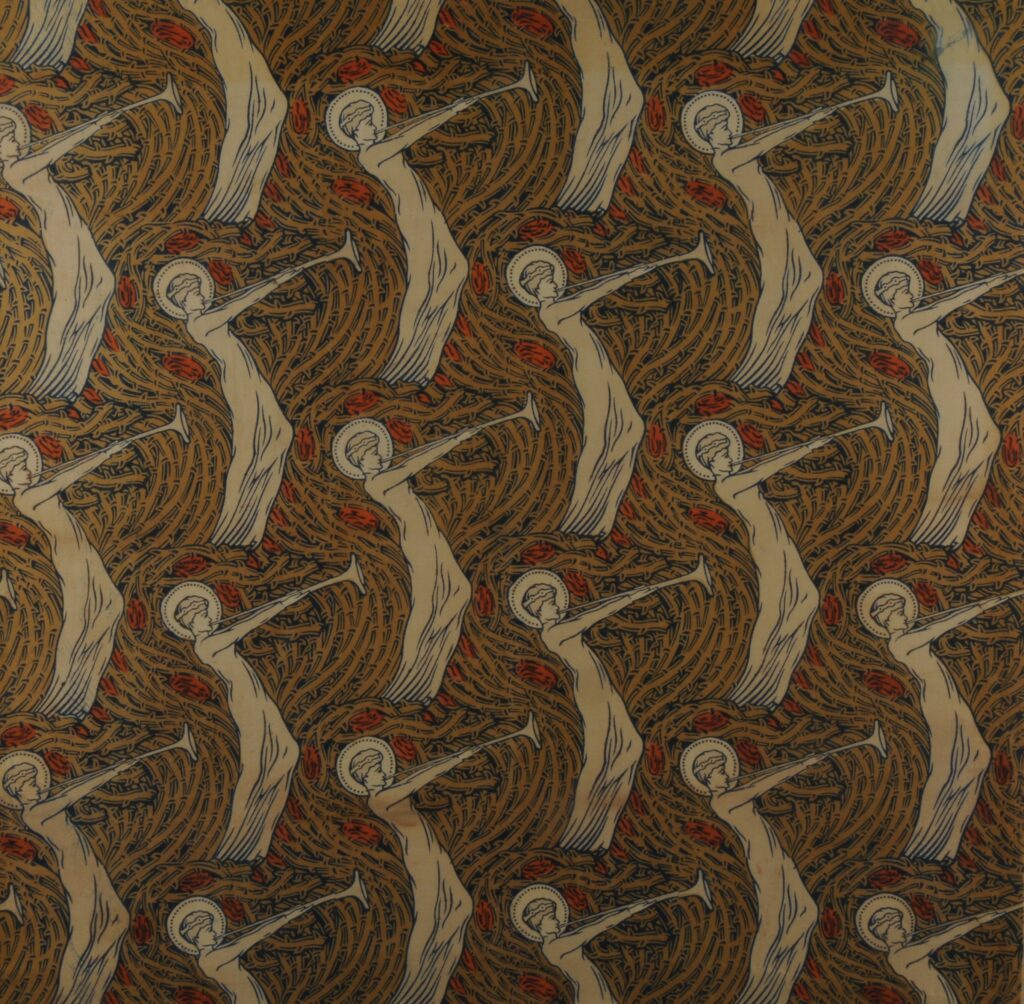
The Century Guild was a pioneering, progressive group, active in the UK at the end of the 19th century, taking part in the design revolution of the time. As it is rarely explored, I loved learning that the William Morris Gallery in London has just opened an exhibition dedicted to this important venture. Entitled ‘Within The Reach of All: The Century Guild,’ it seeks to explore the pioneering aesthetics and lasting legacy of this influential association of artists, designers and craftspeople.
The Century Guild was established by the architect and designer Arthur Heygate Mackmurdo (1851-1942), who later helped found the William Morris Gallery, and his assistant, Herbert Percy Horne (1864-1916), in close collaboration with designer Selwyn Image (1849 – 1930). They aspired to elevate crafts to the status of art, integrate both art and crafts in domestic interiors, and democratize good design. Within The Reach of All: The Century Guild will explore the group’s key figures, along with its influence on Art Nouveau, 20th-century design and modern publishing, through the William Morris Gallery’s collection. The Gallery, which is owned and run by Waltham Forest Council, holds the world’s largest and most comprehensive collection of Century Guild works.
Founded in 1882, the Century Guild was intended as a forum for designers and artisans to collaborate and sell work. It spanned architecture, painting, furniture, sculpture, textiles, wallpaper and metalwork; examples of which will be on display. The Guild’s designs proved extremely influential, both in Britain and internationally, making Mackmurdo one of the most significant figures in British design history. He was responsible for popularizing a number of innovative ideas with the British public, including community-focused architecture, modern interior design and building conservation.
he Guild’s influence would also be felt across Europe and on display will be Mackmurdo’s 1883 publication Wren’s City Churches, considered one of the first examples of Art Nouveau which flourished at the turn of the 20th century, owing to the cover artwork’s use of dense whiplash curves. The book would also form part of his successful campaign to save many of Christopher Wren’s baroque churches, considered deeply unfashionable at the time, from demolition. William Morris was an associate of Mackmurdo, and the Century Guild followed the Arts and Crafts tradition Morris had been instrumental in establishing, including an emphasis on natural forms and a revival of crafts, while simultaneously furthering the style’s emphasis on aesthetics.
The Guild also retained the social values and ideals set out by Morris and John Ruskin, but it was this shift in emphasis towards aestheticism that inspired Art Nouveau, which separated artistic appearance from social concerns. The Century Guild and its associates were socially progressive, exemplified by Selwyn Image attending every day of Oscar Wilde’s three-week trial for homosexuality in 1895. The group were connected to some of the era’s foremost thinkers, writers and artists, and their circle also included fashionable society – Mackmurdo was a cousin of Richard D’Oyly Carte, owner of The Savoy and Horne designed the hotel balconies which can still be seen today.
The Guild frequently incorporated motifs from the natural world into their designs and these stylized natural forms evoked the sensation of nature without directly imitating it. On display will be wallpapers and textiles, intricately decorated with animals and flora such as peacocks, tulips and squirrels – one of Mackmurdo’s favourite motifs. The Century Guild also began to incorporate figures into their wallpaper and textile designs, as can be seen in Horne’s Bay Leaf Frieze (c.1882) which depicts a repeating pattern of kneeling figures in classical robes, playing musical instruments against a frieze of bay leaves, and his c.1884 design, Angel with Trumpet. The inclusion of figures was seen as highly innovative and novel for the time and, along with the Guild’s use of sinuous natural forms, can be seen as foreshadowing the Art Nouveau movement.
All images courtesy of William Morris Gallery; the exhibition will be on view until August 31, 2021.



